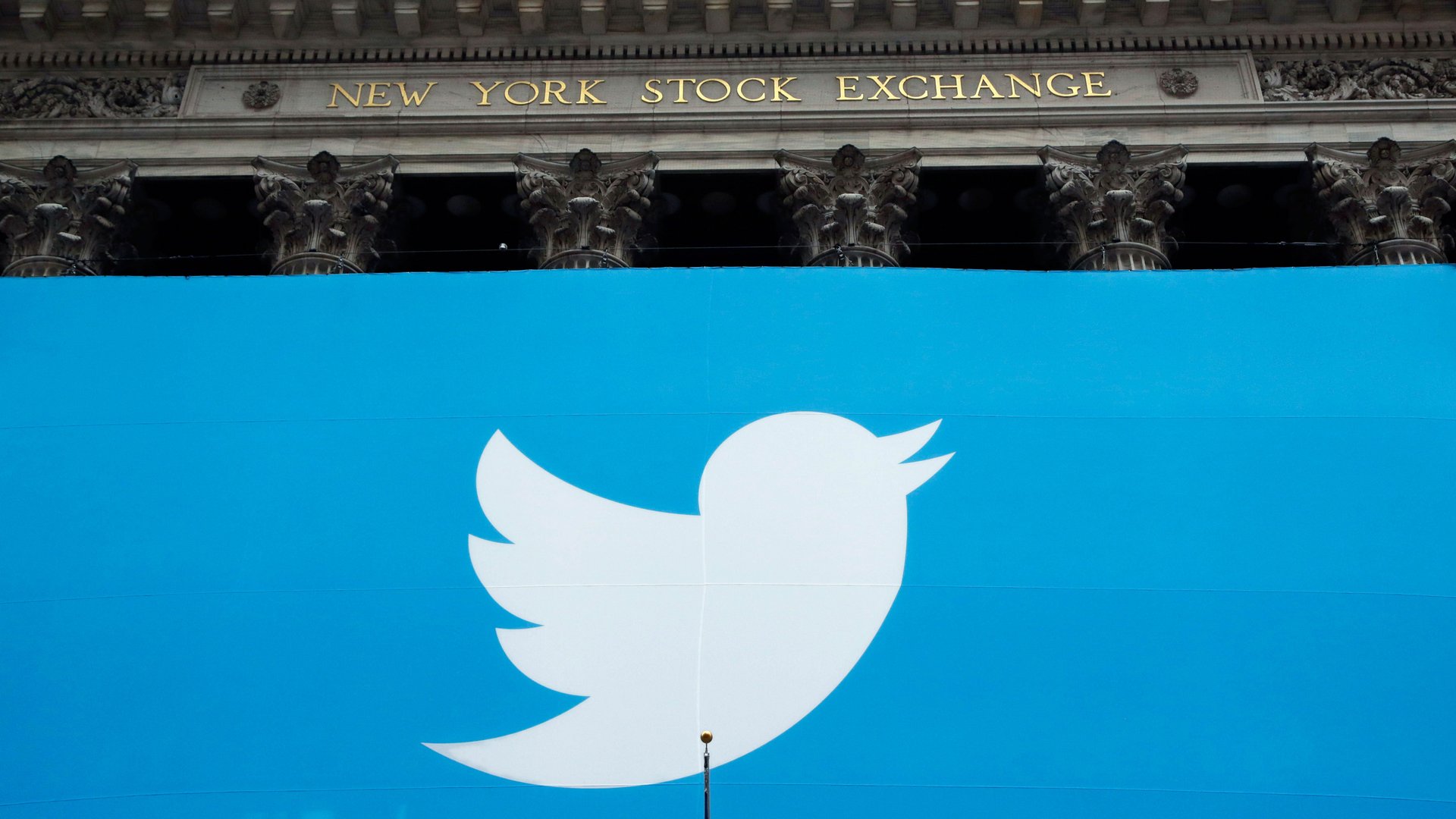Twitter hopes to finally show Wall Street some progress
Investors haven’t been too keen on Twitter lately. This time last year, the stock hit a peak of $67, but it’s more recently been floating at around $40. Shareholders have been particularly worried about slowing user growth as well as recent management shuffles that brought in a new chief financial officer and other executives.


Investors haven’t been too keen on Twitter lately. This time last year, the stock hit a peak of $67, but it’s more recently been floating at around $40. Shareholders have been particularly worried about slowing user growth as well as recent management shuffles that brought in a new chief financial officer and other executives.
But come tomorrow, Feb. 5, Twitter will have its moment to win some hearts and minds when it reports its quarterly earnings—and perhaps regain some confidence. There are two key metrics investors will be keeping an eye out for:
- Revenue: Three months ago, Twitter warned of slowing sales growth and set low expectations for the fourth quarter, forecasting revenue between $440 million and $450 million. On the high end, that represents an 85% rise year-over-year, a notable decline from the triple-digit growth of recent quarters. Monetization also remains an issue. Twitter still lags behind Facebook, generating only $1.13 in ad revenue per active user the third quarter, or about half of Facebook’s $2.22.
- Monthly active users: Wall Street wants proof that Twitter has mainstream appeal. Analysts expect the company to grow its base by 20% to about 290 million users, give or take a million. Assuming it meets expectations that would represent a slight deceleration in growth from recent quarters. (It’s likely Twitter will also tout a high number of logged-out users to boost its overall audience size. During its last earnings report, the company said the number of logged-out users is two to three times larger than its active user base.)
Under its new executive regime, Twitter has been pushing out a number of new features lately, including ads that run on other platforms, group messaging, video sharing and editing capabilities, and a recap of tweets that users missed when they weren’t using the app. The company has also been testing an instant timeline, which shows new users a stream of tweets tailored by interest.
Ultimately, Twitter aspires to have the largest audience in the world. But not everyone is so confident in the social network. In a research note, RBC Capital Markets characterizes the goal as “noble.” But its response as to whether or not it was realistic was telling: “TBD…”